Philodendron Rugosum is a tropical plant species that belongs to the Araceae family. This plant is native to the rainforests of Ecuador and thrives in humid weather at heights of up to 5,000 feet in the Andes highlands. Its unique texture and shape of leaves, which are leathery and fold together at the stem, have earned it the nickname Pigskin Philodendron.
The Philodendron Rugosum is an extremely rare plant due to the loss of its natural habitat. However, due to its popularity and relative ease of propagation, it’s making a stand in the collection of many house plant enthusiasts.
A prolific climber and very easy to maintain, this native of the Andes adds a great touch to anyone's house plant collection. Let’s take a look at what it takes to care for this rare beauty.

What is Philodendron Rugosum
Philodendron Rugosum is a tropical evergreen plant known for its unique and attractive foliage. It is a climbing plant that can grow up to 15 feet long with stems that can attach themselves to a moss or coir pole to create a tropical look to any room it graces.
The leaves of Philodendron Rugosum are dark green, and leathery in texture, and have a distinct wrinkly feel to them. The leaves can grow up to 8 inches long. This wrinkled leathery leaf is why the Rugosum gets the common name of Sow's Ear or Pigskin Philodendron.
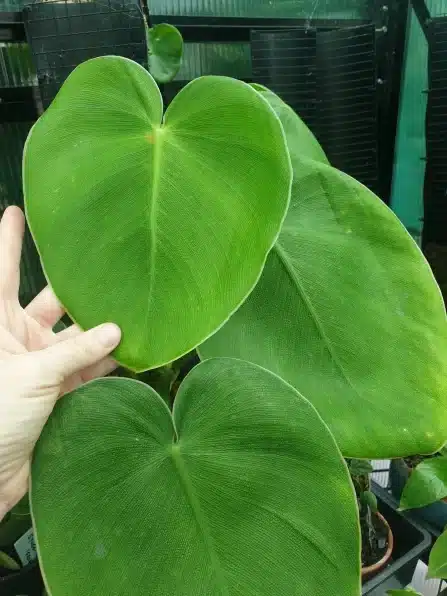
Warm and humid conditions are favored by this philodendron with bright indirect, well-draining soil, and minimal care requirements; it does require a bit more water than some plants but is overall maintenance-free.
Philodendron Rugosum Plant Basics:
| Common Name: | Sow’s Ear Plant, Naugahyde Philodendron, and Pigskin Philodendron, Philodendron Rugosum Aberrant Form |
| Botanical Name: | Philodendron Rugosum |
| Plant Type: | Climbing, epiphyte or hemiepiphyte |
| Size: | 15 foot in length, 8 in leaves |
| Light: | Bright Indirect light |
| Soil: | Well draining, potting soil, orchid bark, perlite, and peat moss or coco coir, worm castings and charcoal |
| Water: | Keep the soil moist but not waterlogged |
| Vulnerabilities: | Root rot from overwatering, common pest problems |
| USDA Growing Zones: | 10 -11 |
Caring for a Philodendron Rugosum Plant
Philodendron Rugosum is an easy-care plant that can thrive in a variety of conditions. However, proper care is essential to ensure that the plant remains healthy and vibrant. By paying attention to its needs for light, water, and humidity, you can help your Philodendron Rugosum thrive and grow into a beautiful addition to your home or garden. Here are some tips to guide you in caring for your plant.
Type of Soil
Philodendron Rugosum plant care begins with the proper soil. Not a super picky plant, it will thrive if given the opportunity. The best soil for this plant is a well-draining , airy soil made up of potting soil, orchid bark, perlite, coco coir or peat moss. Drainage is the key to a healthy plant.
The pH of the soil should be neutral to acidic at around 5.6-7.5, which is generally the range of commercial potting soil. You can pick up some pH soil tester if you want to be certain.
philodendron-rugosum-soil.jpg
Rugosum Water Needs
It is important to keep the soil moist, especially for this particular philodendron which prefers more moisture in the soil than others. Deep watering once or twice a week if necessary is the preferred method.
Let the water run through the pot and then completely drain for the best results. Don't allow the water to stand in the pot tray for too long if at all. Consistent moisture is the key with this plant.You have to keep an eye on it during the summer months to keep it moist when the temps are higher, but it will take less water during the fall and winter months.
Lighting Needs
Philodendron Rugosum will appreciate being kept in bright indirect light such as from an eastern or western-facing window. Direct sunlight can burn your foliage. On the other end of the light spectrum, the Philodendron Rugosum doesn’t do well at all in low light areas.
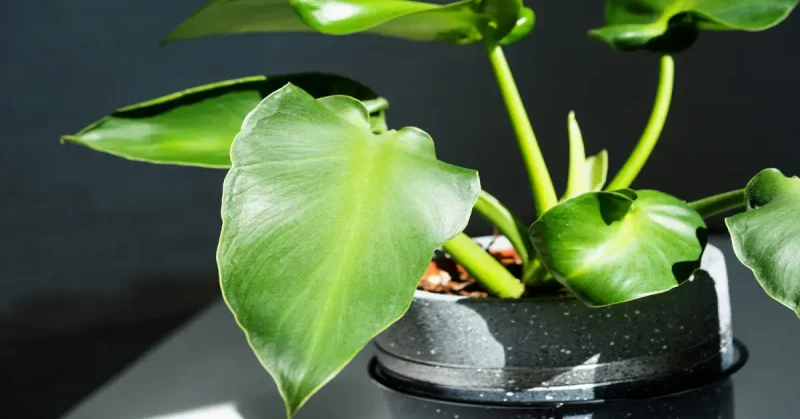
What Temp and Humidity Should a Philodendron Rugosum Be?
Philodendron Rugosum is a tropical plant, which means it thrives in warm and humid conditions. It prefers temperatures ranging from 65 to 80°F (18-27°C), which is similar to the conditions found in most indoor environments.
In terms of humidity, this plant requires a high level of moisture in the air. It is recommended to keep the humidity level around 60-70%, but it can tolerate lower levels of around 40-50%. You can maintain humidity by placing a humidifier near the plant, grouping it with other houseplants, or misting its leaves regularly.
If the air in your home is too dry, you may want to consider using a humidifier to increase the moisture in the air. Alternatively, you can place a tray of water near the plant or mist its leaves regularly with a spray bottle to help increase humidity levels.
Fertilizing the Plant
Philodendron Rugosum will fall into the moderate feeder category, and overfeeding can result in nitrogen burn. Using a balanced fertilizer with a nutrient ratio of 20-20-20 diluted to half strength is a good option to ensure that the plant gets the necessary nutrients without the risk of overfeeding.
Purchase 20-20-20 Plant Fertilizer Here
It's best to apply the fertilizer once a month during the active growing season from early spring until the end of summer. During the colder months when the plant's growth rate slows down, it doesn't require any feeding, and it's best to let the plant rest until the following growing season.
Remember to always follow the instructions on the fertilizer label and avoid overfeeding your Philodendron Rugosum to keep it healthy and thriving.
Pruning Method
Philodendron Rugosum doesn't require much pruning, but occasional trimming can help keep the plant looking neat and tidy. Here are the steps to follow when pruning your Philodendron Rugosum:
- Start by sterilizing your pruning shears with rubbing alcohol to avoid transferring any plant diseases.
- Identify the leaves or stems that are yellow, brown, or damaged and need to be removed. You can also remove any leggy or overly long stems to encourage bushier growth.
- Cut the leaves or stems using sharp pruning shears at a 45-degree angle just above a leaf node or the base of the stem. Avoid cutting too close to the base of the plant, as this can damage the stem and inhibit growth.
- After pruning, wipe the blades of your pruning shears with rubbing alcohol to sterilize them and prevent any potential transfer of diseases.
By following these steps, you can keep your Philodendron Rugosum healthy and well-groomed.
Philodendron Rugosum Propagation
Philodendron Rugosum is relatively easy to propagate using stem cuttings. Here is a simple guide to propagating your Rugosum:
- Start by selecting a healthy stem from your Philodendron Rugosum that has at least two nodes. The nodes are where the leaves or roots grow out of the stem.
- Using clean and sharp pruning shears, cut the stem right below a node. The cutting should be at least 4-6 inches long.
- Remove the lower leaves on the stem, leaving only two to three leaves at the top.
- Dip the cut end of the stem in rooting hormone powder to promote root growth.
- Plant the cutting in a pot filled with well-draining soil. Water the cutting well and place a plastic bag over the pot to create a greenhouse effect.
- Place the pot in a bright, warm, and humid location. Make sure to keep the soil moist but not waterlogged.
- After a few weeks, you should see new growth emerging from the cutting. Once the cutting has rooted and established itself, you can remove the plastic bag and treat it like a mature plant.
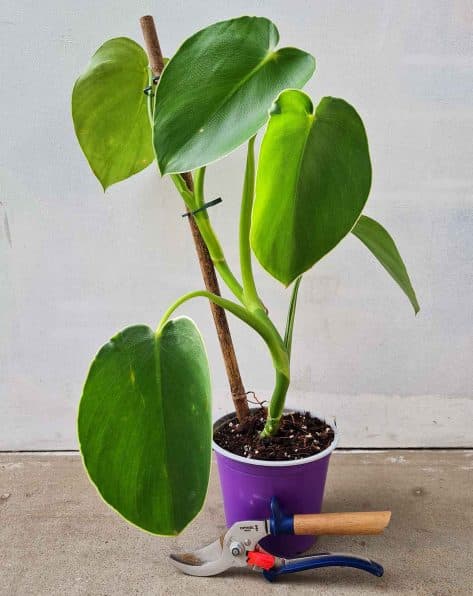
Air Layering
Air layering is a great way to propagate Philodendron Rugosum and it can also be used to rejuvenate an old plant. The process involves creating a small greenhouse around a growth node on the stem of the plant and encouraging it to produce roots, which can then be used to create a new plant. This method is especially useful if the plant is too large to easily propagate by other means or if you want to create a new plant while keeping the original intact.
- Locate a healthy stem on the plant that you would like to propagate. Look for a node or area where leaves emerge from the stem.
- Use a sharp, clean knife or pruner to make a 1-2 inch cut at a 45-degree angle on the stem just below the node.
- Carefully peel away the bark and outer layer of the stem, exposing the inner layer of the stem.
- Take a handful of moist sphagnum moss and wrap it around the exposed portion of the stem, making sure to cover the entire area.
- Wrap a layer of plastic wrap around the moss, making sure to seal the top and bottom edges tightly.
- Check the moss every few days to ensure that it stays moist. If it feels dry, mist it with water or add more moist sphagnum moss.
- After a few weeks, roots should start to grow from the moss. Once the roots are a few inches long, it's time to remove the air layer from the mother plant.
- Carefully cut the stem below the roots, making sure to avoid damaging them.
- Plant the air layer in a pot with well-draining soil and keep it in a warm, humid location until it becomes established.
Air layering can be a bit tricky, so be patient and take your time.
Similar Philodendron Rugosum Types (Philodendron Rugosum Aberrant)
Philodendron Rugosum Aberrant is a variation of the Philodendron Rugosum, but there are other plants in the same family that share similar traits and care requirements. Here are a few examples:
Philodendron Gloriosum: This plant has large heart-shaped leaves with velvety green tops and reddish undersides. Like the Rugosum, it prefers bright, indirect light and well-draining soil.
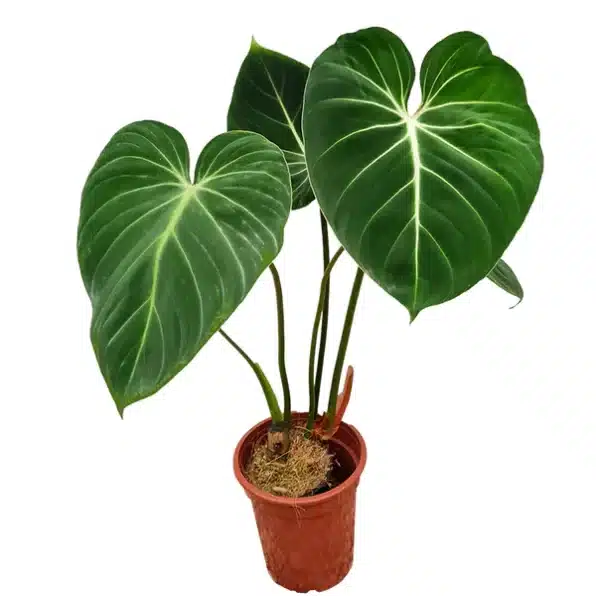
Philodendron White Knight: This plant has striking white and green variegation on its large leaves. It also prefers bright, indirect light and well-draining soil.
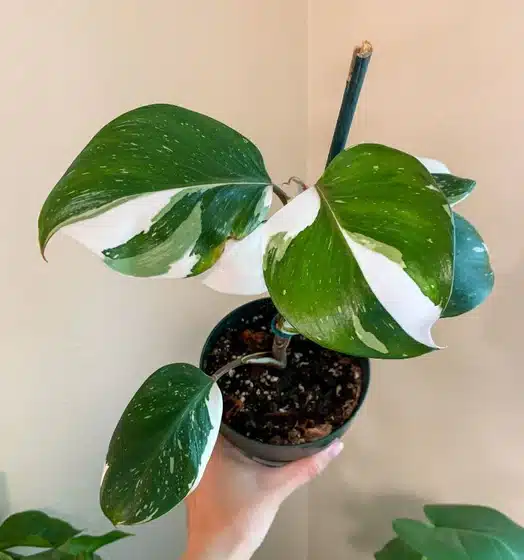
Philodendron Xanadu: This plant is in the Araceae family, tropical in nature, widely cultivated as a houseplant.

Common Problems with Philodendron Rugosum
Philodendron Rugosum is a relatively easy plant to care for, but like all houseplants, there can be some common problems. In this section, we'll discuss the problems you might encounter while caring for your Philodendron Rugosum plant.
Growing
Common growing problems with Philodendron Rugosum include the [possibility of mineral deficiencies, caused by overwatering, or fungal growth. Underwatering can also affect the growth of your plant.
These issues are generally detectable by leaf discoloration or leaf curling. Dropping leaves may also be an indicator of a potential growing problem.
Diseases
Philodendron Rugosum plants are generally hardy and resistant to most diseases. However, they can be susceptible to certain plant diseases if not cared for properly. Some common diseases that can affect Philodendron Rugosum include:
- Leaf spot: This is a fungal disease that can cause circular, water-soaked spots to appear on the leaves of the plant. As the disease progresses, the spots may turn yellow or brown, and the leaves may drop off.

- Root rot: This is a fungal disease that can occur when the soil is too wet or poorly drained. It can cause the roots of the plant to rot, which can lead to wilting, yellowing, and dropping of leaves.
- Bacterial blight: This is a bacterial disease that can cause water-soaked lesions on the leaves and stems of the plant. The lesions may turn brown or black and can cause the leaves to drop off.
Pests
- Mealybugs: These pests are small, white, and fluffy insects that can infest the plant and suck the sap out of the leaves, causing them to wilt and turn yellow.
- Spider mites: These are tiny pests that can spin webs on the leaves of the plant, causing them to look dusty and grayish in color. They can also cause the leaves to turn yellow and drop off.
Interesting Facts About the Philodendron Rugosum
Here are a few more interesting facts about Philodendron Rugosum:
- Philodendron Rugosum is one of the rarest Philodendron species, and it's highly sought after by collectors. Due to its rarity, it can be quite expensive compared to other houseplants.
- This plant is also known by other common names, including “Pigskin Philodendron,” “Wrinkled-leaved Philodendron,” and “Rugose Philodendron.”
- Philodendron Rugosum is native to Central and South America, where it grows in rainforests as an understory plant.
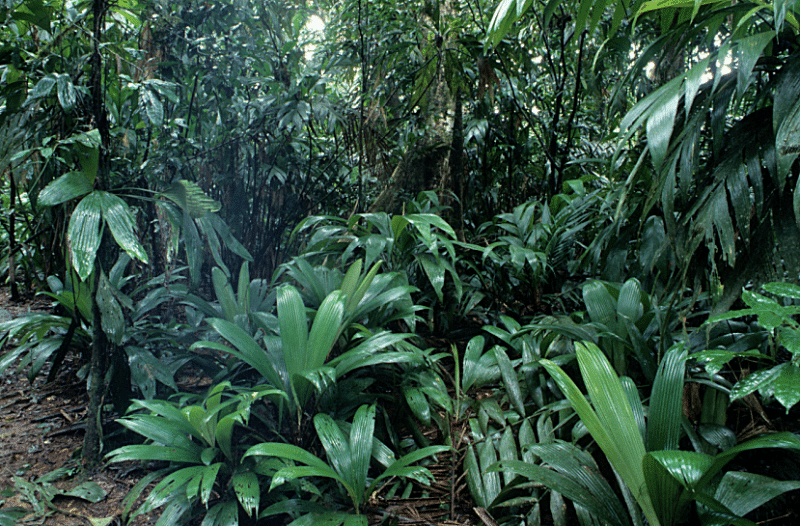
- Like other Philodendron species, Philodendron Rugosum is an excellent air purifier. It can remove harmful pollutants from the air, including formaldehyde, benzene, and trichloroethylene.
FAQ’s
Is Philodendron Rugosum poisonous?
Yes, the Philodendron Rugosum is considered toxic to humans and animals.
How often should I water my Philodendron Rugosum?
Depending on the season and the weather, you should water your Philodendron Rugosum twice per week in the summer and reduce the water in the winter.
Where do I find Philodendron Rugosum for sale?
Online will be your best for finding this rare Philodendron.
Is Philodendron Rugosum a climber?
Yes, Philodendron Rugosum is a climber, and can create that tropical feeling in your houseplant collection.
Is Philodendron Rugosum indoor or outdoor?
It is a plant that can be easily grown indoors and is a native tropical plant, so under the right conditions could be grown outdoors as well.


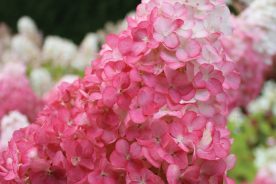
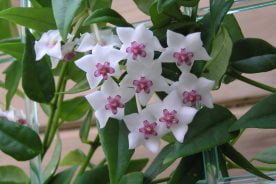
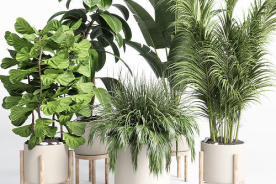

No Comments